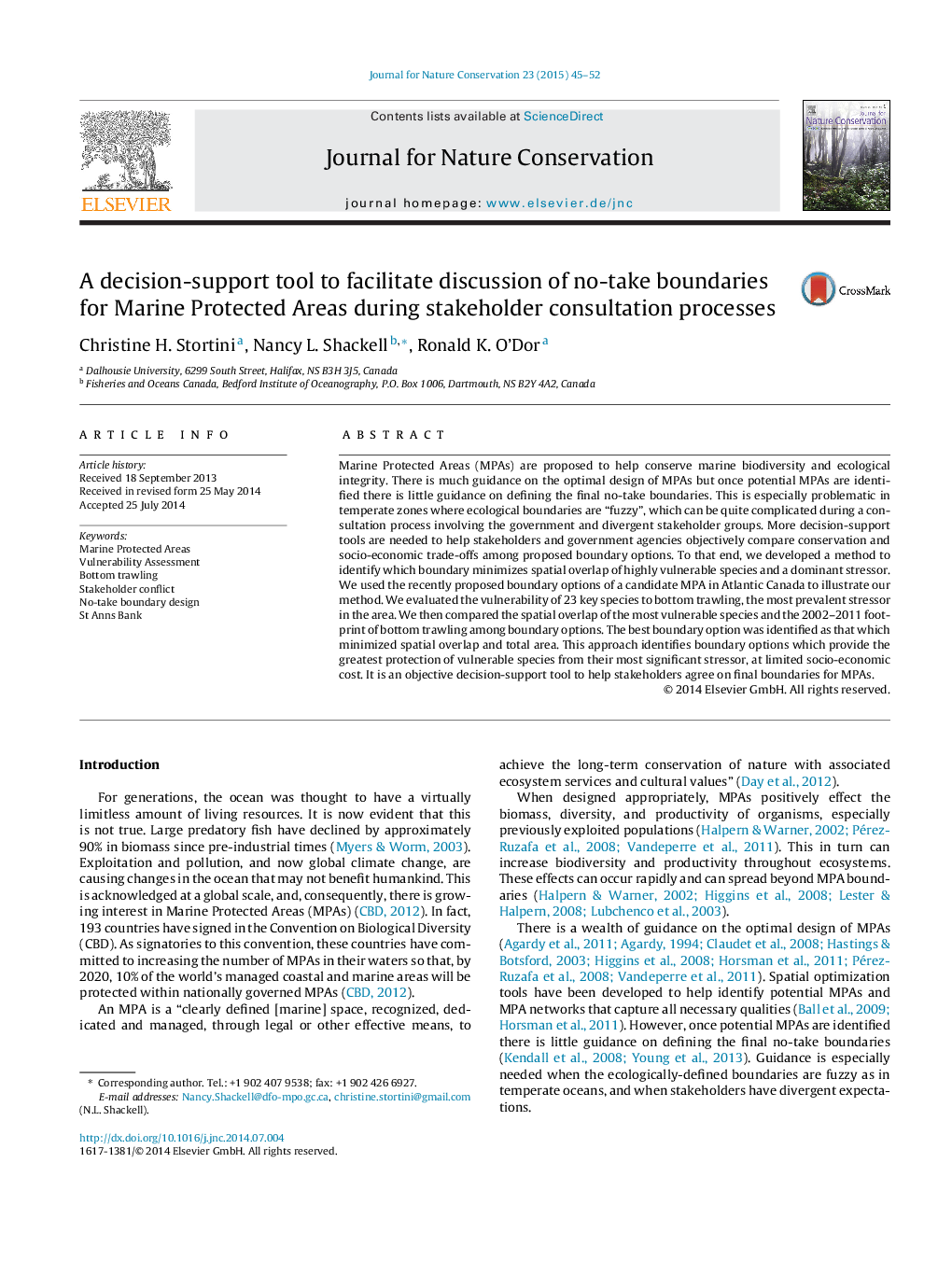| Article ID | Journal | Published Year | Pages | File Type |
|---|---|---|---|---|
| 6305491 | Journal for Nature Conservation | 2015 | 8 Pages |
Abstract
Marine Protected Areas (MPAs) are proposed to help conserve marine biodiversity and ecological integrity. There is much guidance on the optimal design of MPAs but once potential MPAs are identified there is little guidance on defining the final no-take boundaries. This is especially problematic in temperate zones where ecological boundaries are “fuzzy”, which can be quite complicated during a consultation process involving the government and divergent stakeholder groups. More decision-support tools are needed to help stakeholders and government agencies objectively compare conservation and socio-economic trade-offs among proposed boundary options. To that end, we developed a method to identify which boundary minimizes spatial overlap of highly vulnerable species and a dominant stressor. We used the recently proposed boundary options of a candidate MPA in Atlantic Canada to illustrate our method. We evaluated the vulnerability of 23 key species to bottom trawling, the most prevalent stressor in the area. We then compared the spatial overlap of the most vulnerable species and the 2002-2011 footprint of bottom trawling among boundary options. The best boundary option was identified as that which minimized spatial overlap and total area. This approach identifies boundary options which provide the greatest protection of vulnerable species from their most significant stressor, at limited socio-economic cost. It is an objective decision-support tool to help stakeholders agree on final boundaries for MPAs.
Related Topics
Physical Sciences and Engineering
Earth and Planetary Sciences
Earth and Planetary Sciences (General)
Authors
Christine H. Stortini, Nancy L. Shackell, Ronald K. O'Dor,
